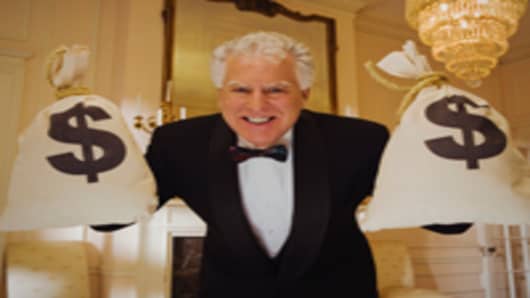While the growth of income inequality in the United States is shocking and is surely transforming the economic and political landscape, the transformation may be very different from what many analysts expect.
Over the weekend, New York Times columnist Nick Kristoff drew attention to an epically-long series on inequality by Slate's Timothy Noah. I won't pretend to have read the entire thing yet. But Kristoff summarizes the jumping off point nicely: "The richest 1 percent of Americans now take home almost 24 percent of income, up from almost 9 percent in 1976.
Keep in mind that when Noah and Kristoff discuss income inequality, what they are discussing is a relative measure of yearly household income. By many absolute measures, Americans of all economic classes are far better off than they were 35 years ago.
Items once considered luxuries are now commonplace, making life far more physically comfortable and convenient across a wide range of incomes. And, on a relative basis, the very rich are worse off now than they were in past eras: except in a very few cases, they are forced to actual work for their incomes rather than live off the income from their investments.
But Kristoff thinks that growing inequality leads to deepening financial distress. Why would that happen? In a sense, his explanation is a version of the old idea of "keeping up with the Joneses." Here's how Kristoff describes it: "When inequality rises, the richest rake in their winnings and buy even bigger mansions and fancier cars. Those a notch below then try to catch up, and end up depleting their savings or taking on more debt, making a financial crisis more likely."
But is that really what happened? It seems to be the story through the beginning of 2005, when Americans were consuming more while their savings rates fell. But halfway through the last decade, the personal savings rate began to climb again. It bottomed in 2005, and then began to climb upward again. In fact, the elevated savings rate—and subsequent lack of "robust" consumer spending—is one of the things that has so many economists worried about the future growth rates of the economy.
The economic crisis followed a lurch in inequality and years of depleted savings--but a far more proximate cause was the return of savings. The climb in savings preceded both the financial crisis and the recession, although it was obviously given a boost by both. But the data very clearly show, the growth of savings started while Wall Street was booming and income inequality still climbing.
Under the Kristoff theory of competitive spending, that should not have happened. Why did people stop trying to keep up with the Joneses?
Surprisingly enough, the best explanation for this behavior by American households may come from a study of Chinese households. A trio ofscholarsat Tsinghau University examined urban household survey datafrom 1997 to 2006, years of rapidly rising income inequality in China as well as the US. What they find is that rising inequality actually leads to an increased propensity to save and declining consumption. They argue that as the rich get richer and society focuses on wealth as a source of social status, everyone else starts saving more to improve their social status. It's keeping up with the Joneses in reverse—competitive savings.
The finding from urban Chinese households are robust. They apply even when controlled for family income. The young and the poor save more, and divert more spending to education.
Could it be that sometime during the last decade Americans reached an inequality inflection point, flipping from competitive spending to competitive savings? On an anecdotal level, there seems to be some support for this. Most people I talk with these days like to brag about frugality and savings, as opposed to ostentatious spending. The notion of competitive savings makes sense.
Interestingly, the very data that Kristoff thinks supports his competitive spending thesis may be better suited to the competitive savings theory.
Robert H. Frank of Cornell University, Adam Seth Levine of Vanderbilt University, and Oege Dijk of the European University Institute recently wrote a fascinating paper suggesting that inequality leads to more financial distress. They looked at census data for the 50 states and the 100 most populous counties in America, and found that places where inequality increased the most also endured the greatest surges in bankruptcies.
Bankruptcy, of course, is a way of halting spending. It not only allows a household or business to stop spending to pay down debts, it makes spending more difficult by making credit more difficult to obtain. Maybe what Frank, Levin and Dijik are actually observing is competitive savings through bankruptcy. In some sense, increased bankruptcy may be a pre-requisite to an era of competitive savings, a necessary deleveraging that proceeds the growth of savings.
The problem with Kristoff's theory is that it lacks a mechanism for triggering a recession and it cannot explain what happened in the middle of the last decade. It sure looks like competitive savings got started, and kick started the recession.
___________________________________________________
Questions? Comments? Email us atNetNet@cnbc.com
Follow John on Twitter @ twitter.com/Carney
Follow NetNet on Twitter @ twitter.com/CNBCnetnet
Facebook us @ www.facebook.com/NetNetCNBC



